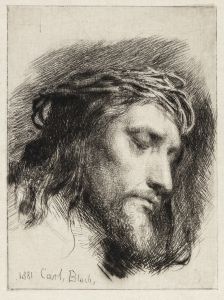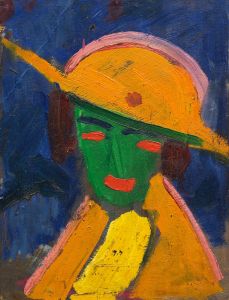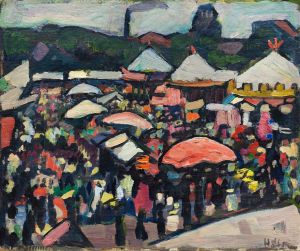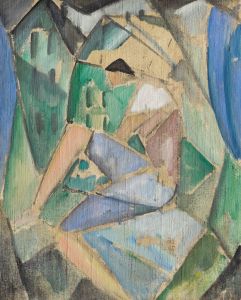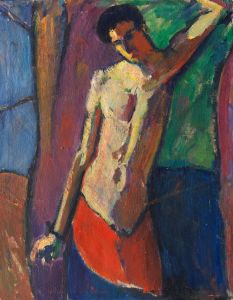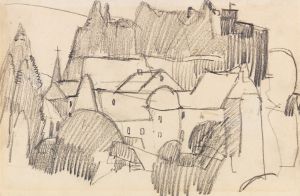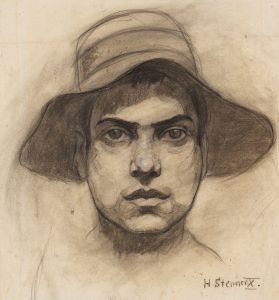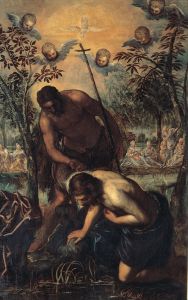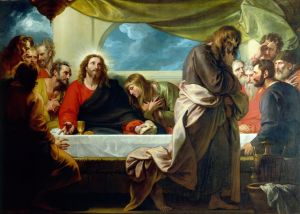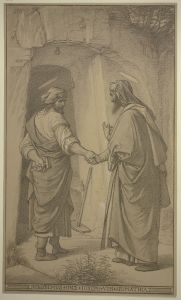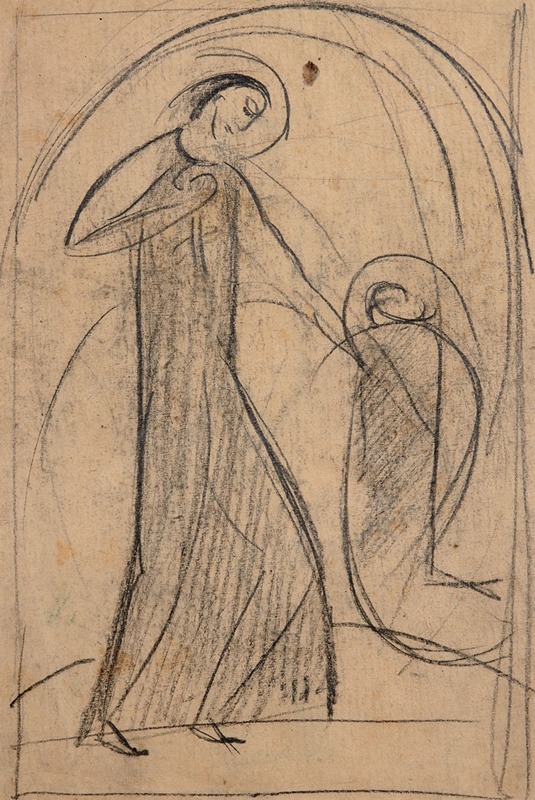
Figurale Szene
A hand-painted replica of Hermann Stenner’s masterpiece Figurale Szene, meticulously crafted by professional artists to capture the true essence of the original. Each piece is created with museum-quality canvas and rare mineral pigments, carefully painted by experienced artists with delicate brushstrokes and rich, layered colors to perfectly recreate the texture of the original artwork. Unlike machine-printed reproductions, this hand-painted version brings the painting to life, infused with the artist’s emotions and skill in every stroke. Whether for personal collection or home decoration, it instantly elevates the artistic atmosphere of any space.
Hermann Stenner (1891–1914) was a German Expressionist painter whose career was tragically cut short during World War I. Among his notable works is the painting "Figurale Szene" (Figurative Scene), which exemplifies his distinctive style and contribution to early 20th-century German art. Stenner was known for his vibrant use of color, dynamic compositions, and exploration of the human form, all of which are evident in this piece.
"Figurale Szene" is a work that reflects Stenner's engagement with the artistic movements of his time, particularly Expressionism. The painting features a group of figures rendered in bold, expressive brushstrokes and a vivid color palette. The composition emphasizes emotional intensity and movement, hallmarks of Stenner's approach to capturing the human experience. The figures in the scene are stylized rather than realistic, a characteristic technique of Expressionist art, which sought to convey inner emotions and subjective perspectives rather than objective reality.
Stenner was deeply influenced by his studies under prominent artists such as Adolf Hölzel at the Stuttgart Academy of Fine Arts. Hölzel's teachings on color theory and abstraction had a significant impact on Stenner's artistic development. Additionally, Stenner was associated with the avant-garde art circles of his time, including the Sonderbund exhibition in Cologne in 1912, which showcased modern art movements and introduced him to the works of other leading Expressionists.
"Figurale Szene" was created during a period of intense productivity for Stenner, shortly before his untimely death. In 1914, at the age of 23, Stenner was conscripted into the German army and sent to the front lines during World War I. He was killed in action later that year, cutting short a promising career and leaving behind a relatively small but impactful body of work.
Today, "Figurale Szene" and other works by Hermann Stenner are celebrated for their contribution to the Expressionist movement and their reflection of the cultural and artistic currents of early 20th-century Europe. His paintings are held in various collections, including museums and galleries in Germany, where they continue to be studied and appreciated for their historical and artistic significance.







